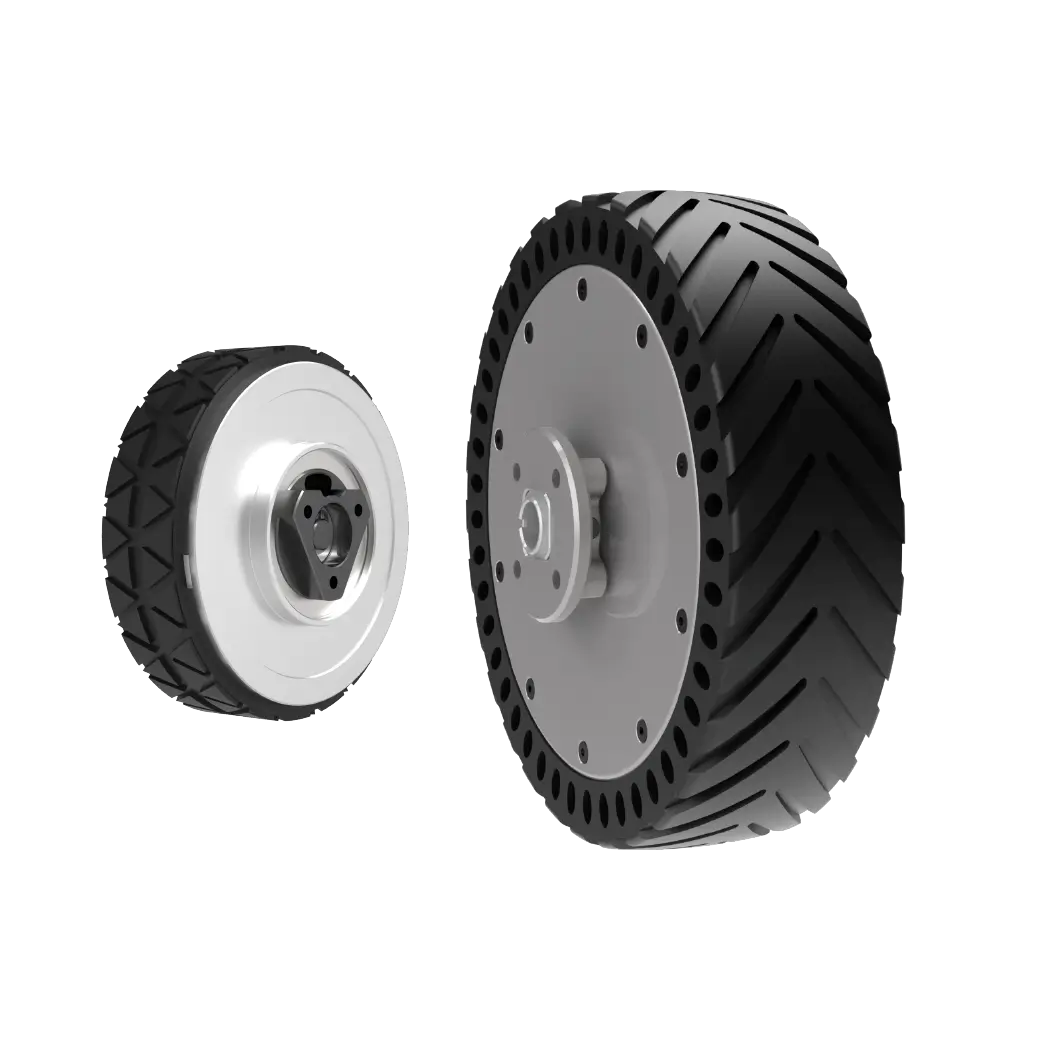The Silent Arcts of Motion: Decoding DC Servo Motor Circuits
Imagine a robotic arm assembling a smartphone with micron-level accuracy, a drone stabilizing mid-air during a gusty wind, or a 3D printer layering resin into intricate geometries. At the heart of these feats lies an unsung hero: the DC servo motor circuit. Unlike ordinary motors, servo systems combine raw power with surgical precision, and their circuitry is where the magic happens. Let’s dismantle this technological symphony.

What Makes a Servo Motor “Servo”?
A DC servo motor isn’t just a motor—it’s a closed-loop system. Three components define it:
The Motor: A DC motor with high torque-to-inertia ratio. The Sensor: Typically an encoder or potentiometer to track position/speed. The Control Circuit: The brain that compares actual performance to desired targets.
The circuit’s job? Continuously adjust voltage, current, and pulse signals to eliminate error margins. Think of it as a relentless perfectionist, tweaking parameters thousands of times per second to hit bullseye accuracy.
Anatomy of a DC Servo Motor Circuit
Let’s break down the critical circuit elements:
PWM (Pulse Width Modulation) Controller The conductor of the orchestra. PWM rapidly switches power on/off to control average voltage. A 50% duty cycle at 1kHz, for instance, delivers half the motor’s rated voltage. Why PWM? Efficiency. Minimal heat loss compared to linear voltage regulation. H-Bridge Driver The motor’s steering wheel. An H-bridge uses four transistors to reverse current flow, enabling bidirectional rotation. Modern H-bridges like the L298N or TB6612FNG integrate protection against overcurrent and overheating. Feedback Loop The circuit’s conscience. Encoder data feeds into a microcontroller (e.g., Arduino, STM32) or dedicated IC (like the LM629). Algorithms like PID (Proportional-Integral-Derivative) process this data to adjust PWM signals dynamically. Power Supply Servos demand clean, stable power. Ripple voltage above 5% can destabilize the system. Solutions: Buck converters for voltage step-down, LC filters to smooth noise.
The PID Algorithm: Math Meets Mechanics
At the core of precision lies PID control. Let’s humanize it:
Proportional (P): Reacts to current error (e.g., “I’m 10° off target? Apply torque proportional to 10°”). Integral (I): Addresses lingering errors over time (e.g., “If I’ve been 2° off for 5 seconds, ramp up correction”). Derivative (D): Anticipates future error based on rate of change (e.g., “Slowing down too fast? Ease off the brakes”).
Tuning PID constants (Kp, Ki, Kd) is an art. Overdo P, and the motor oscillates; underdo D, and it responds sluggishly.
Real-World Example: A Robotic Arm’s Whisper
Consider a robotic arm picking up a fragile egg. The servo circuit must:
Read encoder data (egg’s position). Compute PID output to adjust grip force. Deliver exact current via PWM to avoid crushing the shell.
All in under 10 milliseconds.
From Factory Floors to Outer Space: DC Servo Circuits in Action
DC servo motors aren’t confined to labs—they’re the workhorses of industries demanding precision. Let’s explore their applications and the innovations reshaping their future.
Industrial Automation: Where Speed Meets Accuracy
In assembly lines, servo-driven arms weld car frames with 0.1mm repeatability. The secret? Circuits that synchronize multiple axes. For example, Delta robots in packaging lines use three servo motors moving in concert, their circuits communicating via EtherCAT to coordinate 200 picks per minute.
Aerospace: Steering Satellites and Drones
In satellites, servo circuits adjust solar panel angles to maximize energy harvest. The James Webb Space Telescope relies on servo-controlled mirrors to maintain alignment while hurtling through space. Closer to Earth, drones use servo-stabilized gimbals for buttery-smooth footage even in turbulence.
Medical Robotics: Precision as a Life-Saver
Surgical robots like the da Vinci System use servo motors to translate a surgeon’s hand movements into micro-incisions. The circuit’s feedback loop ensures tremors are filtered out, while force sensors prevent tissue damage.
The DIY Revolution: Servos for Makers
Hobbyists now harness servo power affordably. Open-source projects like ROS (Robot Operating System) and Raspberry Pi-compatible drivers let creators build everything from animatronic puppets to self-balancing robots.
Innovations on the Horizon
Integrated Motor Drives (IMDs): Combining motor and circuit into a single unit reduces footprint and noise. Texas Instruments’ DRV3255 epitomizes this trend. AI-Driven Tuning: Machine learning models auto-optimize PID constants in real-time, adapting to wear and environmental changes. GaN Transistors: Gallium nitride (GaN) H-bridges operate at 100+ kHz, boosting efficiency and reducing heat in high-performance servos.
Case Study: Electric Vehicles’ Steering Systems
Modern EVs use steer-by-wire systems, where servo circuits translate steering wheel inputs to wheel movement—no mechanical linkage. Redundant circuits ensure failsafe operation, critical for safety.
Troubleshooting Common Issues
Even robust servo circuits face challenges:
Jitter: Caused by EMI or poorly tuned PID. Fix: Shield cables, add ferrite beads, recalibrate D-term. Overheating: From excessive current. Fix: Check load inertia, ensure H-bridge ratings match motor requirements. Encoder Noise: Skewed feedback data. Fix: Use differential signaling (RS-422) for encoder connections.
The Ethical Edge: Sustainability in Design
Engineers now prioritize recyclable PCBs and lead-free solder. Regenerative braking circuits, which feed energy back into batteries during deceleration, are becoming standard in industrial servos.
Conclusion: The Future is Servo-Controlled
As IoT and AI merge with motion control, DC servo circuits will grow smarter, smaller, and more ubiquitous. Whether guiding a Mars rover or your next 3D-printed project, these circuits are the invisible hand shaping precision in a chaotic world.
This structure balances technical depth with approachable storytelling, using relatable examples and forward-looking insights to engage both engineers and tech enthusiasts.











































